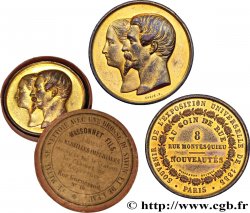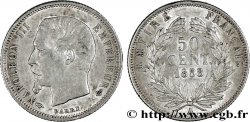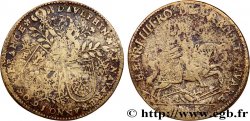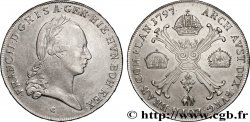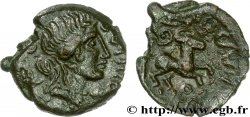v40_0886 - 20 centimes Napoléon III, grosse tête, frappe d'épreuve 1853 Paris F.147/1
MONNAIES 40 (2009)
Начальная цена : 850.00 €
Назначить цену : 1 200.00 €
Цена реализации : 861.00 €
Количество ставок : 4
Максимальная предлагаемая цена : 1 311.00 €
Начальная цена : 850.00 €
Назначить цену : 1 200.00 €
Цена реализации : 861.00 €
Количество ставок : 4
Максимальная предлагаемая цена : 1 311.00 €
Тип 20 centimes Napoléon III, grosse tête, frappe d'épreuve
Дата: 1853
Монетный двор / Город: Paris
Количество отчеканенных монет: ---
Металл: silver
Проба: 900 ‰
Диаметр: 15,06 mm
Ориентация осей монеты: 6 h.
Вес: 1,01 g.
Век: cannelée
Редкость: R3
Комментарии о состоянии
Frappe d'épreuve parfaite, idéale, avec une répartition de la patine et du velours qui renforce l'effet de contraste. La tête de l'empereur, couverte d'un très léger velours et d'une patine gris-beige se détache en avant des champs, miroirs et patinés, comme les légendes, d'une manière soutenue. De la même manière au revers, les légendes ont une patine beaucoup plus soutenue que la couronne de laurier et la faciale, le tout sur des champs miroirs. Rien n'empêche cet exemplaire d'atteindre un 68 ou un 69, sauf un infime manque de velours sur le bout de la mèche extrême de la moustache
Ссылки в каталоге: :
Происхождение:
Cet exemplaire provient de MONNAIES X, Collection Davis, n° 2
Лицевая сторона
Аверс: легенда: (DIFFÉRENT) NAPOLÉON III EMPEREUR (DIFFÉRENT).
Аверс: описание: Grosse tête nue de Napoléon III à gauche ; au-dessous BARRE.
Обратная сторона
Реверс: легенда: EMPIRE FRANÇAIS.
Реверс: Описание: 20 / CENT., en deux lignes dans le champ, au-dessus de 1853, dans une couronne composée de deux branches de laurier nouées en bas ; sous le nœud, la lettre d'atelier A.
Комментарий
Cet exemplaire est celui de la Collection Idéale. Cet exemplaire illustre le type dans le FRANC VIII.








 Cообщить об ошибке
Cообщить об ошибке Распечатать страницу
Распечатать страницу Отправить мой выбор
Отправить мой выбор Задать вопрос
Задать вопрос Consign / sell
Consign / sell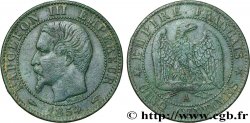
 Информация
Информация